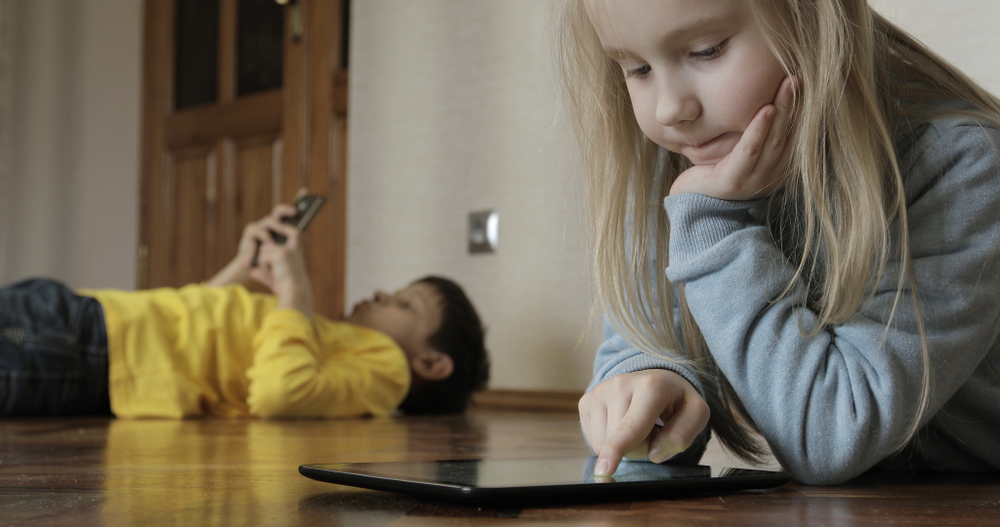They’ll know how to play online games, get updates on their favorite celebrities, find the latest music hits, chat with their equally tech-savvy peers, or ask the Internet for answers to their questions that they might be too embarrassed to ask others. However, they’re unlikely to be aware of, or care nearly as much about, some dangerous aspects of the online world, such as privacy intrusions, malware or fraud. This problem is all the more acute, because children’s sense of wonder is far more heightened and their sense of caution far more subdued than in grown-ups, leaving them particularly vulnerable to digital dangers. How can we help kids learn to make the best use of technology while staying safe?
We need to talk
The importance of ongoing open dialogue about the cyber-universe cannot be overstated. In fact, conversations about online safety should begin from the moment that children begin to roam the internet. Explaining that physical and digital are two sides of the same coin (well, you may want to use other words) and that, just as the real world, the online world is home to both safe and unsafe things provides for a good start.
The same goes for relaying the message to the effect that “don’t do online what you wouldn’t do in real life”. Think sharing personal information or talking to strangers on the internet where, even more so than in real life, nobody may be who they seem to be. This could go hand in hand with explaining why they should never open messages from, or click on links sent by, unknown people, because it could easily be a phishing message.
Naturally, these initial walks in the jungle that is the internet should take place under your supervision. The advice and guidance, however, will help them develop critical thinking and serve them well when they’re older and better suited to use the internet unchaperoned.
We need to do
“Children have never been very good at listening to their elders, but they have never failed to imitate them,” as the author and activist James Baldwin once said. Indeed, the best way to connect to kids is lead by example so they can learn from that example. Also, explain that anything done on the internet leaves a trace and that anything shared or posted can potentially stay there forever. And show them that good password hygiene can actually be fun when turned into an engaging activity that consists of putting together random letters and words.
On the other hand, there is evidence that parents’ use of new media directly influences how much time their offspring spend with technology. Predictably, the more time parents spend browsing the internet or watching the TV, the heavier users of technology their children are likely to be. With this in mind, we should consider limiting our screen time so they don’t feel like they need to compete for our attention.
Which brings us to the need for being cognizant of the quality and duration of online content consumed by children. Clearly, not all online content is equal, and technology can be used for various purposes, including education, content creation, passive consumption, and pure play-time. If you’re concerned about their overindulging in internet consumption, consider creating rules and schedules for their time online. The genie is out of the bottle and imposing a ban on the internet is unlikely to work, so it’s important to ensure a balance between the child’s online and offline time.
Social media?
Indeed, there is a time and place for that, too. Until Facebook introduced Messenger Kids recently, children were not allowed to use any major social network before they were at least 13. Or so the theory goes. Enforcing this restriction has always been next to impossible, and it is well documented that many kids younger than 13 use at least one social media website.
Either way, children need to be made aware of threats lurking on social media. This starts with not befriending people whom they don’t know in real life and being cautious about what kind of information they share. Just as in all other online activities that consist in interaction with other users, social media also automatically act as catnip to individuals of ill repute.
When interacting with their peers, children can also witness or become the victims of cyberbullying or other highly common forms of abusive behavior. Again, by holding open dialogue with your children about the various aspects of cyberspace, you ensure that they’re far more likely to reach out to you when they encounter cyberbullying. In so doing, they can help start a process that may nip it in the bud.
How technology can thwart the abuse of technology
Even if you’ve done your homework and taught your children about responsible behavior online, it’s rather difficult to ensure that they don’t wander into the net’s seedier recesses, whether it happens by accident or where curiosity gets the better of them. Which is where technology can help.
Options such as setting up restricted user accounts for children and/or deploying tools known as parental controls are designed to support you in your mission to help your children use the internet safely and productively. There are various ways in which such controls can be deployed, including at network, device or application levels.
In a nutshell, these features can filter and block age-inappropriate content, restrict what kind of information is shared, and keep tabs on kids’ screen time. They can also keep activity logs, giving you an insight into what kind of online content your children have accessed. At the end of the day, it’s important to have an understanding of what kids are up to online, not least because it can ultimately help refine a family’s cyber-hygiene strategy.
Nowadays, all major operating systems, both computer and mobile, allow for some level of parental controls “out of the box”. There is also a wide range of dedicated software that is designed to shield children from unsuitable content.
Of course, don’t forget the basics of your online safety toolkit, such as keeping all systems and software current and data backed up. Installing a reputable multi-layered security suite – which, in fact, commonly allows for setting up a range of parental controls – will go a long way to helping bolster your family’s cyber-defenses.
Protecting kids online may appear to be a technological issue, but at heart it is a parenting issue. And so it is just another way of looking after them, one that mirrors and complements your care in the real world. They’ll thank you later.






